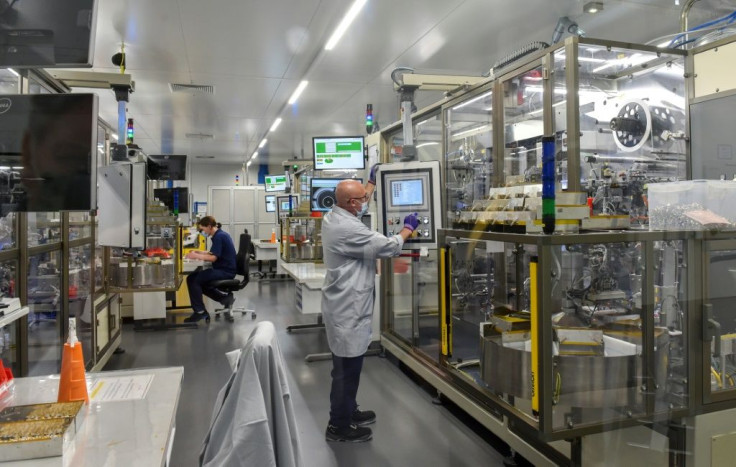Germany Eyes Stronger 2021 Growth As Vaccines Offer Hope
Germany raised its growth forecast for 2021 on Tuesday, offering a glimpse of light at the end of the coronavirus pandemic tunnel as vaccinations finally begin to gather pace in Europe's biggest economy.
"Today's spring projection is an encouragement despite the current serious infectious situation," Economy Minister Peter Altmaier said, upgrading the outlook for 2021 growth to 3.5 percent from 3.0 percent previously.
"This is the year when we will really see a trend reversal," he added.
The recovery is expected to extend to 2022, with growth of 3.6 percent for next year, according to the latest government forecasts.
Europe's top economy contracted by 4.9 percent in 2020 as the pandemic idled entire sectors and upended hundreds of thousands of businesses.
With Germany still firmly in the clutches of a third wave of the pandemic, the country is expected to report weak data for the first three months of the year.
But the pace of vaccinations is accelerating after a stuttering start, with hundreds of thousands of jabs now being administered daily.
The mass inoculations could help accelerate a return to some normality after more than a year of open and close swings to halt Covid-19.
Major economic think tanks have already delivered a more optimistic forecast than the government, having predicted growth of 3.7 percent for the year.
"Once the risk of infections is removed, the economy will show a strong recovery," they said.
Germany came through the first wave of the pandemic relatively unscathed, but authorities have struggled for months to put in place concerted action to stop the current wave.
On Saturday, a new amended law came into force, giving Chancellor Angela Merkel's government more powers to impose restrictions including night curfews and school closures.

The law ends a tug-of-war between the federal government and Germany's 16 states which had in recent months resulted in an often confusing patchwork of restrictions being implemented. Some states with higher infection rates allowed shops to open while others closed kindergartens.
Under the new regulation, all regions with incidence rates of more than 100 new infections per 100,000 people over the last seven days are applying shutdowns and overnight curfews.
Schools must also revert to virtual teaching in areas where the incidence rate exceeds 165.
Seven states had an incidence rate above 165 on Monday, with the national average at 169.
At the same time, hopes are growing that curbs could be eased in coming weeks as the proportion of inoculated people grows.
After a start plagued by huge vaccine delivery problems, the total proportion of Germans with at least one injection has reached 23.4 percent.
Merkel underlined on Monday that Europe's biggest economy is aiming to offer every adult a jab from June.
ING analyst Carsten Brzeski said that and the fact that Germany's foreign markets have faster inoculation programmes will help fuel stronger growth with the country's vital export industry delivering the goods.
"German industry is still booming and is benefitting from the fact that other regions are much further ahead with their vaccination campaigns," Brzeski told AFP.
Massive stimulus packages unleashed by the United States, the European Union and Germany itself are expected to translate into bulging order books for industry.
Earlier in April, official data showed German industrial orders climbing for a second month in a row in February on resurgent domestic demand.
Berlin had previously already expected its economy to return to pre-pandemic levels in 2022 at the latest.
© Copyright AFP 2024. All rights reserved.





















